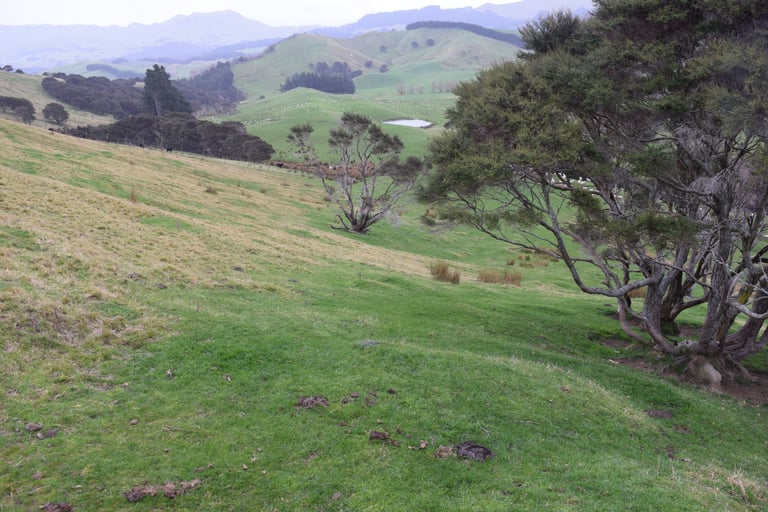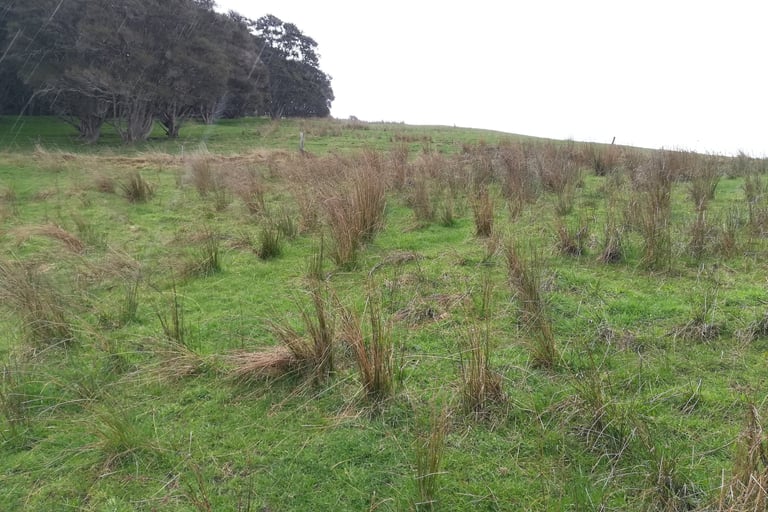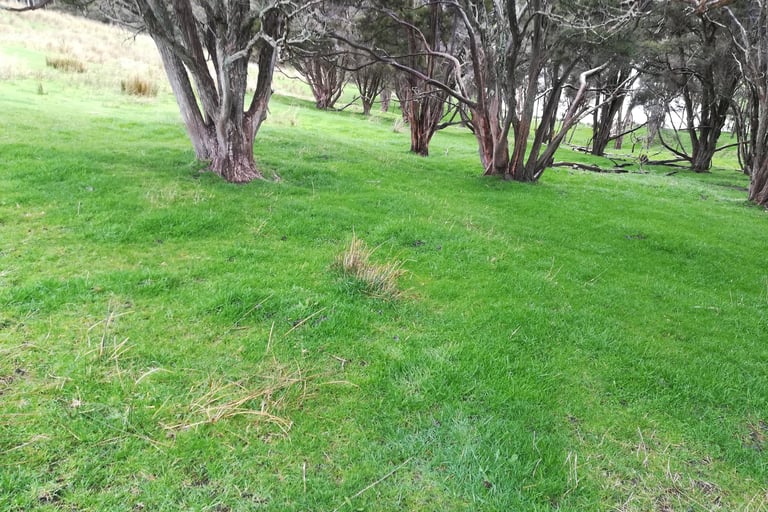Could silvopastoral trees really boost pasture growth?
Blog post.
Tom Mackay-Smith and Raphael Spiekermann
3/16/20243 min read
We recently found 108% more pasture growth under kānuka trees on sloping summer dry hill country pastures compared to open pasture.
This is the first published study to show that there can be more pasture growth under trees in New Zealand.
The study found:
49% more organic matter under the trees.
116% more Olsen-P under the trees.
9% greater porosity under the trees.
There was also a complete transformation in the botanical composition of the pasture. Perennial ryegrass and cocksfoot dominated the pasture under the trees. Browntop dominated the pasture away from the trees.
We think that these differences are mainly due to livestock preferentially spending more time under the trees grazing, and the trees adding organic matter to the soil.
Although our results are interesting, research on more farms is needed to confirm these findings and understand exactly what was going on.
But the results raise the question, what if we could use trees to modify the microclimate, add organic matter to the soil, and optimise the movement of stock within paddocks to increase pasture growth on sloped hill country?
Here is a photo from our site showing the effect of trees at one of our study sites in summer dry Hawke's Bay:
Here is an anecdotal video of pasture changes in summer under mānuka trees in the Wairarapa:
Here is another anecdotal potential positive effect of trees we have seen, this time in Hawke's Bay. The first photo shows a pasture with rushes and no trees. The second photo shows the rushes disappearing under the trees:
There are also studies overseas that have found more pasture production under trees.
Several studies have found that pasture production can be between 17% and 53% higher under holm oaks in dry areas of Spain and Portugal (1,2). The studies suggested that the reasons for this improvement were either increased availability of nutrients under the tree, or microclimate modifications conserving water.
Another study found that pasture production was 45% higher in southern beech silvopastures compared to open pasture in Argentina (3). The researchers suggested that the reason for these effects was that there was 80% less wind in areas with the trees compared to areas without trees, resulting in less evapotranspiration under the trees (4).
References
1. Moreno, G. Response of understorey forage to multiple tree effects in Iberian dehesas. Agric. Ecosyst. Environ. 123, 239–244 (2008).
2. Gea-Izquierdo, G., Montero, G. & Cañellas, I. Changes in limiting resources determine spatio-temporal variability in tree–grass interactions. Agrofor. Syst. 76, 375–387 (2009).
3. Peri, P. L. Patagonia Sur. Sistemas Silvopastoriles en Ñirantales. IDIA XXI For. 5, 245–249 (2005).
4. Bahamonde, H. A., Peri, P. L., Martínez Pastur, G. & Lecinas, M. V. Variaciones microclima´ticas en bosques primarios y bajo uso silvopastoril de Nothofagus antarctica en dos Clases de Sitio en Patagonia Sur. in Proceedings of the 1st National congress of silvopastoral systems 14–16 (INTA Editions, Misiones, 2009).







